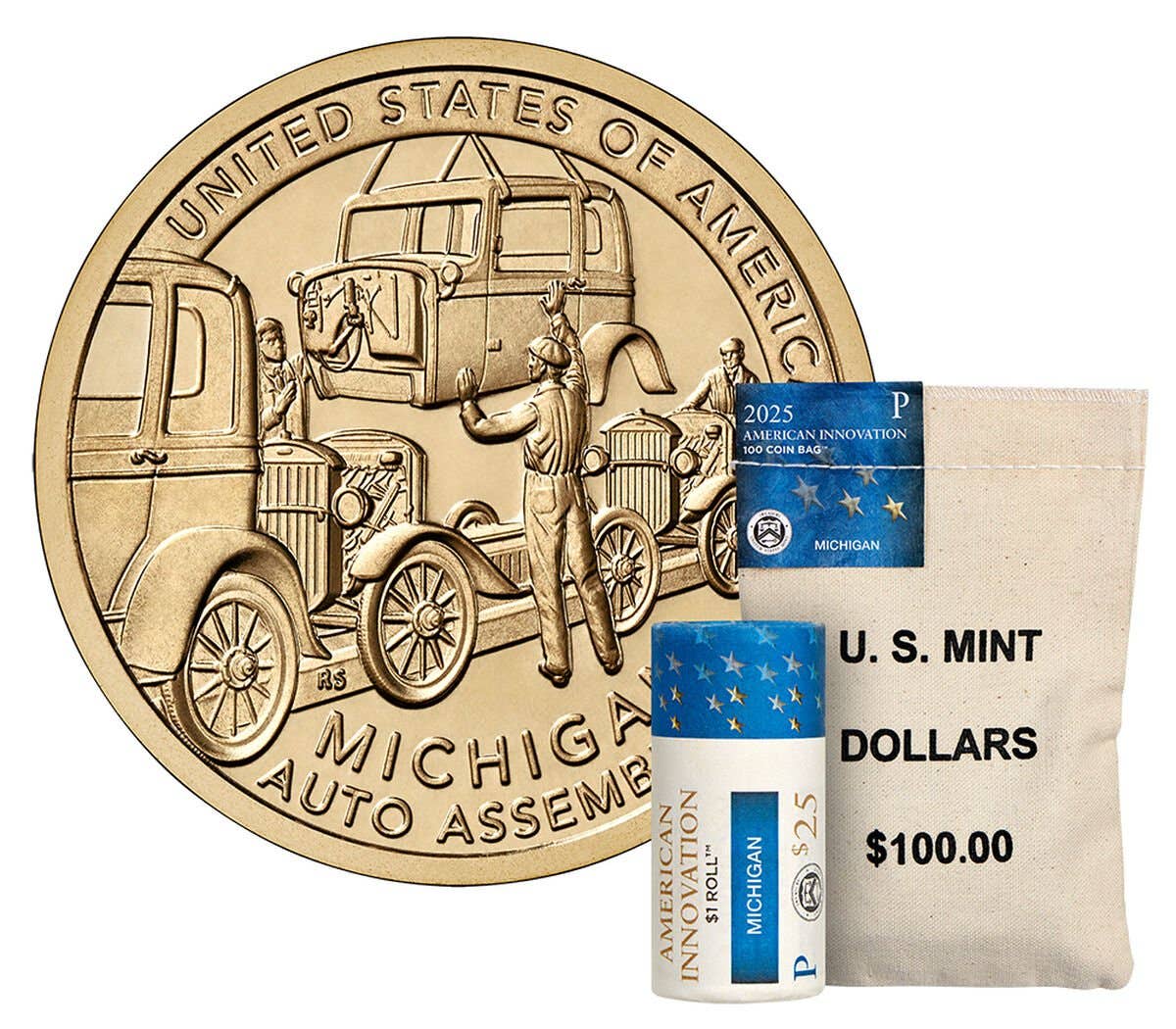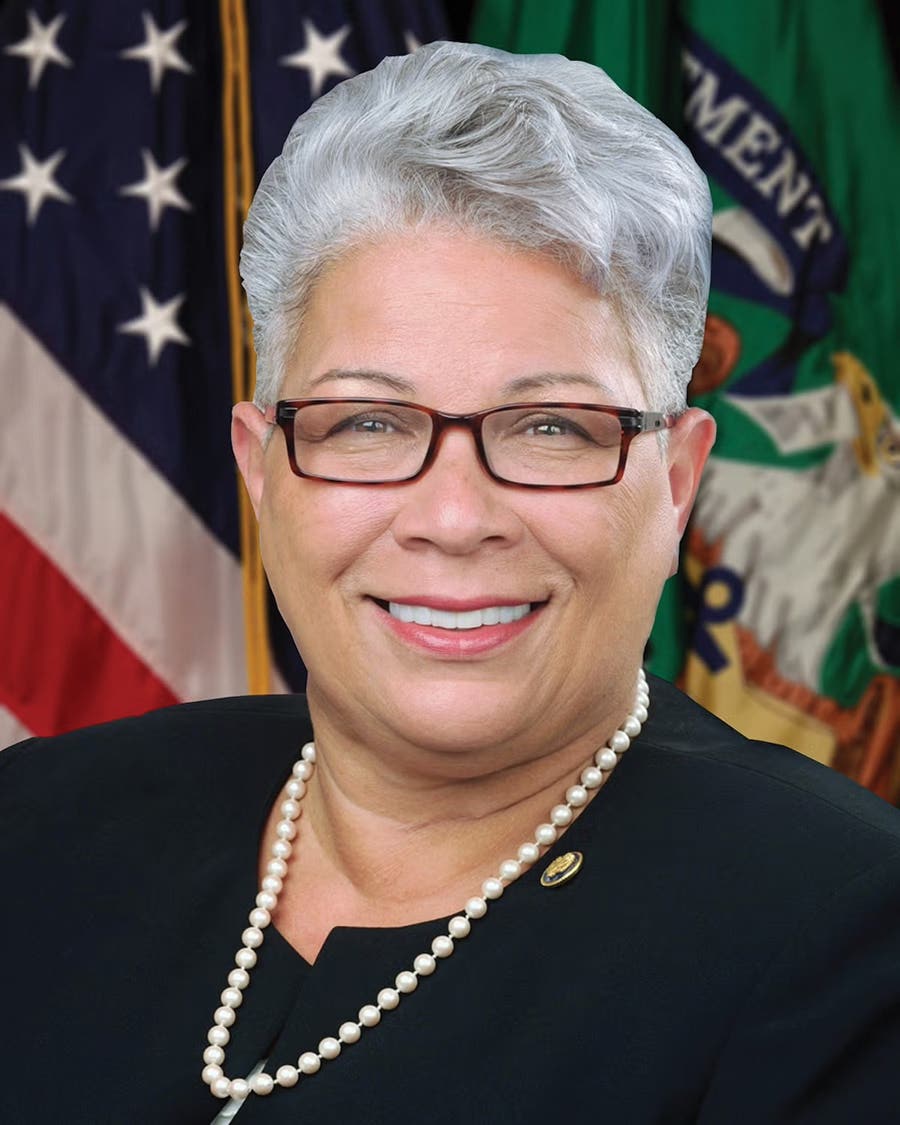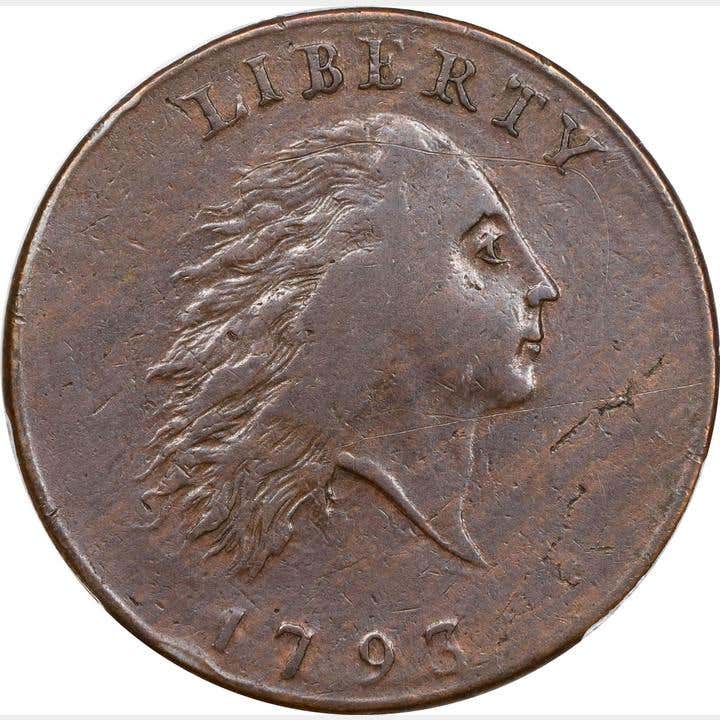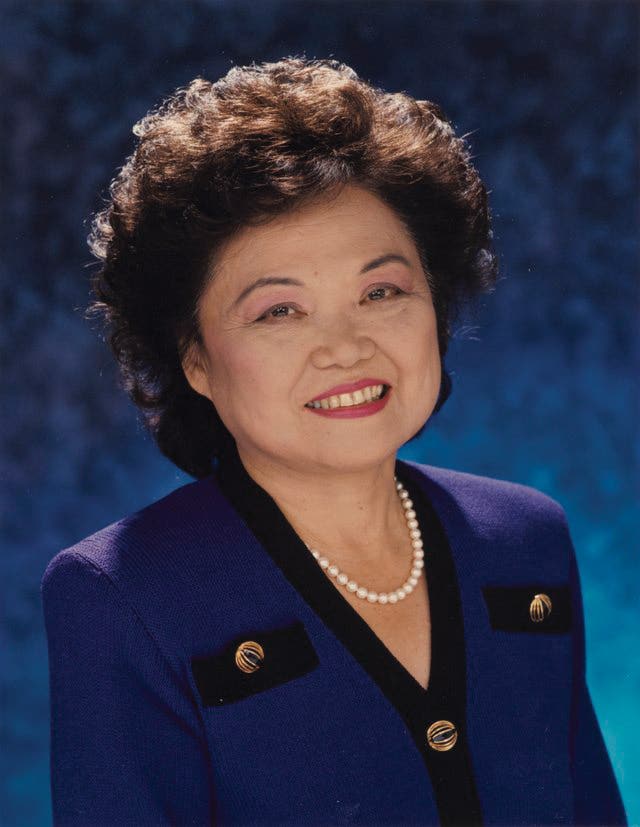New Light Shed on Mysterious Past of 1913 Liberty Head Nickel
Editor’s Note: This is the first part of a two-part feature detailing newly uncovered information on the first showing of the 1913 Liberty Head nickel and the coin’s subsequent rise…
Editor’s Note: This is the first part of a two-part feature detailing newly uncovered information on the first showing of the 1913 Liberty Head nickel and the coin’s subsequent rise to the status of a million-dollar rarity.
On July 11, 1934, 63 members of the Chicago Coin Club gathered at the Atlantic Hotel, in downtown Chicago, for the club’s 185th meeting. President J. Henri Ripstra, a founding member of this now 100+-year-old club, called the meeting to order.
Among the topics of discussion was the mysterious 1913 Liberty Head nickel – a coin that shouldn’t exist. Nineteen thirteen was the year of the change to the Indian head/bison motif, by James Earle Fraser. Therefore, no 1913-dated coins with the prior Liberty head design, by Charles Barber, likely should have been minted. Yet five examples are known. Each of which would bring millions, if offered at auction.
Specifically, the CCC members talked about the 1913 Liberty Head nickel’s first exhibition at an earlier CCC meeting. The reference was with little doubt to the 1919 visit of Samuel W. Brown to the CCC’s Dec. 3, 1919, meeting at the Hotel Sherman, first detailed in my 2017 Numismatic News article.
That 1919 meeting, Brown’s later advertisements and a strange reference to well-known collector William F. Dunham, as we shall see, sparked a nationwide search for the coins – well before Texas coin dealer B. Max Mehl cemented his place in the coin’s history with classified advertisements promising to pay $50 for examples of this rarity.
Samuel W. Brown (far left in the second row from the top) pictured on the steps of the Philadelphia Mint in October 1919. He is The photo was taken following a tour of the mint. Reproduced from Mehl’s Numismatic Monthly, November 1919.
Chicago Remembers
Of the July 11, 1934, CCC meeting, at which CCC members reminisced about the coin’s earlier exhibit, the August 1934 issue of the American Numismatic Association’s journal, The Numismatist, recorded on pp. 522-523:
“CHICAGO COIN CLUB–185th meeting of the Chicago Coin Club, July 11. Sixty-three members and guests were present. The meeting was called to order by President Ripstra.
“Correspondence was read relative to the new Maryland half dollar and the proposed new Arkansas and Texas coins.
“Thomas Shugrue, Miss Elsie Borcherdt, Walter C. Scholl and H.J. Bartholemay were elected to membership. The application of Allan W. Grissom was received.
“Mrs. Barker, hostess of the coin exhibit at Marshall Field’s, spoke briefly of the exhibit at the store and invited members of the club to visit the exhibit.
“Mr. Boyer raised the question of relative prices of coins twenty-five years ago and today, which led to some discussion.
“Mr. Ripstra announced the recent death of Franklin McVeigh, former Secretary of the Treasury, and told of his presenting buffalo nickels to members of the Chicago Numismatic Society several months before they were issued for circulation.
“The 1913 Liberty-head nickel was discussed and the story of its first exhibition at a meeting of the Chicago Coin Club was told by several of the older members [italics added].
“Dr. Skeen asked twenty members to stand, introduce themselves, and state their collecting specialties.…”
Until my article, “Shadowy rarity: 1913 nickel first seen in 1919, not 1920,” appeared in the Aug. 1, 2017, issue of Numismatic News, most who have explored the sketchy history of this coin recorded that the earliest documented showing of the nickel was at the late August 1920 ANA convention in Chicago. There were rumors that Samuel W. Brown, a former Philadelphia Mint employee, long linked by collectors to the 1913 Liberty Head nickel’s questionable creation, had exhibited the coin at a CCC meeting prior to his bringing it to the 1920 annual convention. However, documentation of such a meeting was lacking, until it was discovered within the club reports in the pages of The Numismatist.
For those looking for my 2017 article, which expands on some of the topics covered here, it can also be found online, or in the October 2017 issue of Coins magazine, where it ran as, “Research reveals earlier showing of 1913 Liberty Head nickel: Chicago Coin Club members got the first look.” I’m proud to say the Numismatic News article won the James L. Miller Memorial Award: Article or Story of the Year at the 2018 Numismatic Literary Guild Bash in Philadelphia.
Samuel Brown’s first advertisement, in which he announced he would pay $500 for examples of the 1913 Liberty Head nickel, ran in the December 1919 The Numismatist. (Image courtesy American Numismatic Association.)
1913 Liberty Head Nickel’s Debut
The 1919 CCC meeting, where the nickel was first shown (and later remembered by the “older members” in 1934), was held on Wednesday, Dec. 3, 1919. The following is from the February 1920 issue of The Numismatist, as reported by CCC secretary-treasurer R. Edward Davis on pp. 61-62:
“The tenth monthly meeting of the Chicago Coin Club was held at the Hotel Sherman, Chicago, Wednesday, December 3. The following members were present: Miss Naerup, Mrs. Ripstra, Messrs. Boyer, Geo. Brown, S[amuel] W. Brown [italics added], Carey, Davis, Gunderson, Hoffer, Johnston, Lawless, Leon, Kelly, Rackus, Ripstra, Van der Berghen and Wilson. Mrs. Leon and Mrs. Boyer were present as visitors.
“The meeting was called to order by Vice-President Boyer.…
“Ten new members were elected to membership. These were all secured by Mr. Leon. They were Frank A. Johnston, G.W. Tracey, D.A. French, Frank Hansen, Virgil Brand and Roger Graham of Chicago; H.O. Granberg, Oshkosh, Wis.; Samuel W. Brown, North Tonawanda, N.Y. [italics added]; J.G. Gunderson, Aneta, N.D., and E.D. Bushnell, New York.”
One new member, Samuel W. Brown, joined seven other CCC members in displaying coins and paper money for view that evening. A condensed summary, extracted from The Numismatist, shows the following exhibitors and exhibits: By Mr. Rackus, the largest silver and copper issues of several historic Russian emperors and empresses; by Mr. Lawless, a medal of Pope Clement XI and a one-third thaler of John Casimir of Poland; by Mr. Hoffer, American colonial 1722 Rosa Americana, 1787 Massachusetts and 1773 Virginia emissions; by Mr. George Brown, Republic of China cash coins from the Sze-Chuen Province and sets of German prison camp issues; by Mr. Wilson, crowns from Norway’s Christian IV, England’s William III and France’s Louis XVI; and by Mr. Boyer, two California $50 gold slugs.
Tucked away, rather matter-of-factly, in the secretary-treasurer’s report, just after Mr. Boyer’s gold rush $50 slugs and ahead of an “interesting exhibit” of obsolete paper money by Mr. Leon, is this reference to Samuel W. Brown’s exhibit:
“By Mr. S.W. Brown: Proof nickel of 1913, of the old type. Proof nickels are not supposed to have been struck during that year [italics added].”
Here then is the 1913 Liberty Head nickel’s first recorded appearance. The coin was shown that evening to 18 CCC members and guests. Several of these were experienced numismatists who would have recognized the nickel’s import and long remembered their first brush with this mega rarity.
At the July 11, 1934, meeting, nearly 15 years later, this was put to the test, as at least three members were able to reaffirm what happened at that memorable 1919 gathering. By matching the names between the two club reports, those who can be identified as having attended both meetings are: J. Henri Ripstra, Alden Scott Boyer and (likely R. Edward) Davis. (There were probably others, as “several of the older members” recounted the famed nickel’s first exhibit, but without a complete list of the 63 members at the 1934 meeting, there is no way to tell.)
Ripstra was the CCC’s president in 1934 when the nickel was discussed. Davis, as secretary, provided the meeting report to the ANA in 1919. Boyer was CCC’s vice president in 1919, elected president at the Dec. 3, 1919, meeting. He was also left in care of Brown’s nickel after the ANA’s annual convention in August 1920.
A Matter of Contention
Initially, all five of the 1913 Liberty Head nickels were thought to be proofs. Today numismatists argue over some of the coins’ status as such. Brown believed or was pitching his as a proof, as can be surmised from the description at the 1919 meeting and from that at the 1920 ANA convention. There it was noted, on a label accompanying his nickel, that five 1913 Liberty Head nickels were believed to have been minted, none were believed to have reached circulation and all of them were proofs.
When they were or could have been minted has long been in contention. Some writers have argued that the coining was likely nearer the date of the 1920 convention. Others have said the dies for making such coins would have been destroyed prior to that – necessitating that coins were minted circa late 1912 or early 1913 as test pieces or surreptitiously. Also, even if Brown was culpable for their highly questionable coining, some contend he wouldn’t have had access to the dies or the presses, which meant he would have had an accomplice.
Brown worked at the Philadelphia Mint at the time of the switch to the Indian Head nickel. He left in 1913, having served as an assistant curator of the Mint’s coin cabinet (coin collection) and as a storekeeper during his tenure. Whether he obtained his coin or coins then or later is open to question. Some speculate he took all five with him upon his departure in 1913. Yet all that can be documented is that he had a single specimen at the 1919 CCC meeting and a single specimen at the 1920 convention.
Return to the Mint
Perhaps of great significance to the 1913 Liberty Head nickel’s arrival on the numismatic marketplace, and largely unobserved, was Brown’s visit to the 1919 Philadelphia ANA convention, where he took part in an American Numismatic Association-arranged tour of the Philadelphia Mint on Monday, Oct. 6, 1919. He is pictured in the official convention photo, taken on the mint steps following the tour. The image was reproduced in the November 1919 issue of The Numismatist and the December 1919 issue of Mehl’s Numismatic Monthly.
The November 1919 The Numismatist wrote of that Philadelphia Mint tour on pp. 441-442:
“Monday afternoon a visit was made to the Mint, where the party met at 12.30 o’clock. They were courteously received by Dr. [T. Louis] Comparette [curator of the mint cabinet], who accompanied them on the tour of inspection of the mechanical departments of the institution, the various processes of coinage being explained by the Mint guides. The first room visited was the melting-room, where molten metal which later becomes coins is cast into ingots. The next room visited contained the machinery for rolling the ingots into long thin strips, from which the planchets for coins are cut, and finally to the room containing the coining presses and the counting-boards, and where the coins are placed in bags for shipment. The counting-boards were a novelty for many of the party, and the movements of the boards in the hands of the operators, by which 1000 coins at a time are accurately counted in a few seconds, were watched with interest. In this room are also many tables for the examination of the planchets, from which all defective ones are removed. Copper cents appeared to be the product for that day, and for many preceding days, judging from the number of them in sight, and reports of the scarcity of that coin seemed totally unwarranted.
“After the tour of inspection the party was conducted to the Cabinet, where Dr. Comparette was almost overwhelmed with questions regarding the specimens under his care as curator. After all had been answered the party was asked by the committee to step outside, where, in a slight drizzle of rain, the official photograph of the convention was taken.”
How long after the mint visit Brown remained in Philadelphia, before returning to his home in New York, is unknown. The convention closed on Oct. 8.
Food for Thought
What is clear is that, on or before Nov. 20, 1919, Brown submitted the following, which was printed on p. 513 of the December 1919 issue of The Numismatist:
“WANTED
“1913 LIBERTY HEAD
“NICKEL
“In Proof condition, if possible.
“Will pay $500 cash for one.
“SAMUEL W. BROWN
“North Tonawanda, N.Y.”
If Brown adhered to the publisher’s advertising deadline, his ad copy for that issue of The Numismatist was due by Nov. 20. Likely, it was submitted at least a couple of days prior. This was a little more than a month after his trip to Philadelphia and roughly two weeks before the Dec. 3, 1919 CCC meeting.
The quick turnaround begs the currently unanswerable question: Was the placement of his buy ad so soon after his Philadelphia convention/mint visit a coincidence or an outcome of it?
Consider the following possibilities. While in Philadelphia, Brown could have: 1.) learned of the coins during the mint tour from a former associate who had them; 2.) spirited one or more of the coins out at that time or shortly thereafter; 3.) devised a plan on how to bring the coins he or a cohort already had to market; or 4.) came to believe that at least one of the coins was available outside of the mint and an advertisement could bring it to light.
The last of these makes some sense when you consider that at his display of the coin, in August 1920, it was related of the 1913 Liberty Head nickel, “none of these are believed to have been placed in circulation.” Brown likely knew this when he placed his ads. Perhaps he was aware that one or more of the nickels were in other hands. The $500 (later $600) offer was certainly an eye-catching amount in 1920, above most rarities, and at $600 equivalent to around $7,700 in today’s money. If he really was trying to obtain another coin, this amount would have been tempting.
All of this, of course, is conjecture on my part. Maybe, as others who have explored this topic in print have suggested, he had all five coins in 1913, when he left the mint’s employ, and was using his ad to build interest in his rarities. Or, as some contend, his not bringing them out until seven years after their coining was a matter of awaiting the expiration of the statute of limitations on their theft. (Though such a dodge wouldn’t have precluded their confiscation by the government as illegal emissions.)
Who is right? No one is, for certain. There’s simply no solid proof in any direction – just suspicion, mystery and hearsay, sprinkled with a good dose of speculation.
Niceties Aside
The Numismatist was printed on the first of each month and was dropped in the mail in Federalsburg, Md., most often on the fifth. It would then take from five days to several weeks for most members to receive their copies via second-class mail. Given that timeline, the December issue of The Numismatist went to press on Dec. 1, 1919, and was placed in the mail on Dec. 5 – two days after Brown attended the Dec. 3, 1919, CCC meeting. Thus, CCC members saw the 1913 Liberty Head nickel before most if not all of the readers of The Numismatist had a chance to view Brown’s advertisement and learn of the possible existence of this rarity.
Brown conceivably had one of the coins at least by Nov. 20, if not earlier, and the visit to the CCC meeting was more than just a social call. The trip to Chicago required him to travel from his home in North Tonawanda, N.Y., and likely stay overnight, as CCC meetings began at 8 p.m.
The most plausible reason for this wintertime trek halfway across the country was in regard to the upcoming ANA convention in Chicago. At the Philadelphia convention, in October 1919, it was announced that Chicago had been awarded the 1920 ANA convention. For the CCC (formed earlier in 1919), the selection was a distinct honor. For Brown, it represented an opportunity.
What if any contact Brown had with CCC members at Philadelphia or in the intervening time is unknown, but the CCC meeting in Chicago shortly thereafter meant more to him than a chance to become a coin club member. From what is known today, Brown was not much for attending coin club meetings or ANA conventions. He became an ANA member in 1906, but prior to his visit to the 1919 ANA convention, his only recorded ANA convention attendance was in Philadelphia in 1908. This was while he was working for the mint in that city.
If, in late 1919, he had simply wanted to join the CCC, he could have done that from home, as did many of the other nine members admitted to membership that December evening. It was the 1913 Liberty Head nickel and the impending Chicago convention that were most likely his inspiration. The meeting provided a chance to show his rare nickel to the host club and perhaps discuss his bringing it to the CCC’s first ANA convention.
Upping the Ante
Following the nickel exhibit at the CCC meeting in December, Brown ran advertisements in the January through March 1920 issues of The Numismatist offering to buy specimens of the 1913 Liberty Head nickel, but with an increase in the price he was willing to pay to $600 per coin.
Many writers have come to believe that Brown’s ads were simply a ruse, meant to create a market for the coin, or only to legitimize his owning it. This before bringing an example to the ANA convention the following August in Chicago. But if he was hoping to build interest in this previously unheard of rarity, leading up to its reveal at the convention, why didn’t he continue the advertisements? They disappear after the March issue, but could have run conceivably through the July issue, if that was his true motive.
Another quarterly ad buy, as he apparently took for the January-March issues, would have cost $4.25 (equivalent to $58) for his 1/8-page ad. Or, he could have saved 50 cents, buying January-June, six months, at $8.
Also, if his buy offers were merely to provide an explanation of how he came by the coin prior to the 1920 ANA convention – not by theft but by purchase – he certainly wouldn’t have exhibited the coin to 18 members and guests at the CCC meeting held before even the first of his ads made it into print. He could have waited to do that until the January or later CCC meeting, by which time his advertising smokescreen would have been in place.
ANA Bound
Brown may have also attended a meeting of the Rochester Numismatic Association with the coin or coins in advance of the convention, as has long been rumored. Failing that, he next surfaces with the coin at the August 1920 ANA convention in Chicago.
The October 1920 issue of The Numismatist reported on p. 466:
“Samuel W. Brown of North Tonawanda, N.Y., was present for a short time on Monday [Aug. 23]. He had with him a specimen of the latest great rarity in U.S. coinage – the nickel of 1913 of the Liberty Head type. It was among the exhibits the remainder of the Convention, with a label announcing that it was valued at $600, which amount Mr. Brown announced he is ready to pay for all proof specimens offered to him. An explanation of its rarity is that at the close of 1912, the mint authorities not having received orders to use the dies of the buffalo type nickel at the beginning of 1913, prepared a master die of the Liberty Head type dated 1913, and from this master die a few pieces–believed to be five–in proof were struck. None of these are believed to have been placed in circulation.”
The convention closed on Aug. 26, and Brown’s nickel, which he left behind on exhibit, fell into the care of CCC president Boyer. Sometime before the end of 1920, as evidenced by the January 1921 issue of The Numismatist, Brown wrote to Boyer asking for the nickel’s return, as he had a sale pending. It can be assumed that Boyer complied.
On p. 17 of the January 1921 issue of The Numismatist, under heading, “The Rare 1913 Nickel.,” is shown:
“The value of $600 placed some months ago on the 1913 Liberty head type nickel, in proof condition, seems to have advanced, as the following letter from Mr. S.W. Brown of North Tonawanda, N.Y., to Mr. Alden S. Boyer of Chicago, Ill., will show:
“‘Dear Mr. Boyer–I would appreciate it very much if you would return the 1913 Liberty head nickel you have with your coins in the Masonic Temple vault in your city. I have a deal pending for the sale of this coin, and it is necessary that I have it within the next ten days. If you will, kindly send it by express, charges collect, and estimate the value at $750. Thanking you for your courtesy in this matter.’’’
The subsequent role of Texas coin dealer and consummate self-promoter B. Max Mehl is well-known in regard to the 1913 Liberty Head nickel‘s rise to fame. But before Mehl, two others played a previously unknown role in this story. Next time, details of how a small-town Kansas dealer came to be running multiple advertisements seeking 1913 Liberty Head nickels at the same time as Samuel W. Brown. Plus, the early impact of a major Chicago collector, William F. Dunham, who was said in reports during and days after the 1920 ANA convention to have been offered $600 for his 1913 nickel. With that, across the nation, the hunt was on.








